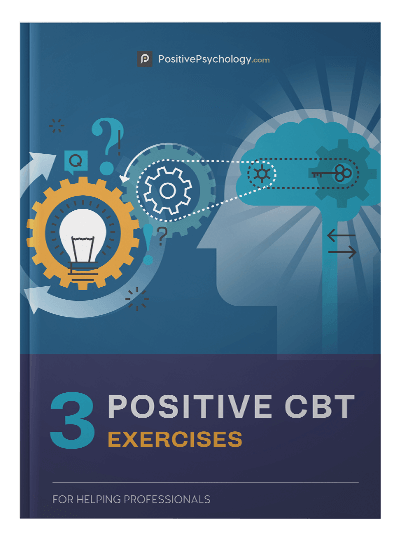How to Engage and Motivate Clients in Therapy
 Have you ever given thought to how to achieve outcomes in therapy?
Have you ever given thought to how to achieve outcomes in therapy?
Longstanding research in community and hospital settings (Paul, 1967; Kiresuk & Sherman, 1968) has examined the factors that are important to achieving positive outcomes, including:
- The client–therapist relationship
- Clients’ motivation to attend
- Clients embracing change and countering resistance
These factors have been present across therapeutic styles and have been a topic of discussion in therapy training programs.
In this article, we will take an in-depth look at engaging with clients both in-person and virtually, and motivating clients to change when they can seem resistant.
Before you continue, we thought you might like to download our three Goal Achievement Exercises for free. These detailed, science-based exercises will help you or your clients create actionable goals and master techniques to create lasting behavior change.
This Article Contains:
How to Engage Clients in Therapy: 6 Steps
You can often engage with clients by asking yourself the question, “Am I connecting with them?”
This can mean connecting with them on a level that is personal to them and can be seen as a success metric in therapy (Hill, Chui, & Baumann, 2013). How do we do this? Here are six steps to help practitioners:
1. Make sure the focus is on the client
While this might sound obvious, it is perhaps the most important step, but one that can be easily overlooked.
The spotlight needs to be kept on the client, with the beginning, middle, and end of each session focusing on the client’s thoughts, feelings, and actions. Practices that can help therapists stay focused include active listening and clearing their own minds before a session starts.
2. Introduce, maintain, and keep confidentiality
When therapists keep the focus on clients, this can help to build trust, an important aspect of the therapist–client relationship. Without it, clients may not feel comfortable opening up for therapists to listen.
Trust for clients does not just mean feeling like they can talk to therapists, but also being assured at the beginning of therapy of what confidentiality means, along with ways in which privacy is maintained.
This could mean where and how clinical notes are stored, but also when a breach of promise may need to take place, such as if the client threatens to harm themselves or others.
3. Incorporate client preferences into the treatment decision-making process
This discussion is especially important for clients who are new to or have limited time in therapy.
Share with your client the different treatment options and consider their reason for attending therapy. This should be done either when first enquiring about therapy or during the first session.
Having the therapist listen intently and take the client’s preferences into account with the treatment decision-making process provides the client with increased incentive to engage.
4. Structure the session
With trust established, structure can help clients stay within the boundaries of sessions.
Structure differs among therapists; some can have protocols for what comes first and last. This can often depend on the type of therapy, from Cognitive-Behavioral Therapy to Solution-Focused to Psychodynamic.
5. Use an eclectic approach
Further to the point about structure, clients can lose interest in therapy if only one type of therapeutic approach is taken, with the same set of techniques and methods used.
An eclectic or integrated form of therapy, which provides unique elements to therapy and can make clients feel more excited about the therapeutic process, can also make the therapist feel more engaged as well.
6. Practice questions
Interviewing skills are a part of many therapists’ training and can also form a key part of therapeutic alliance (Ardito & Rabellino, 2011).
In any good interview, remember to ask open-ended questions to find out more detail from clients. It is important to stay neutral yet curious. Open-ended questions are particularly essential in the first session as therapists get to know and understand their clients.
Showing clients curiosity and asking the right therapy questions are vital aspects of strengthening therapeutic alliance, building rapport, and maintaining empathy and positive regard, which are all key points in building relationships with clients that can help foster necessary change (Bedi, Davis, & Williams, 2005).
Teletherapy Tips: Engaging Your Clients Virtually

There are three important tips that can help therapists engage in today’s virtual world.
Blended care
Making use of a blended care approach is important for clients who may not feel as comfortable using just one method of virtual communication, such as videoconferencing technology.
Instead, therapists make themselves available via text, chat, or instant message – ways that are convenient for the client. These types of flexible communication options can help increase client engagement (Dowling & Rickwood, 2013).
However, the client’s privacy must be maintained at all times, and conventional videoconferencing and texting methods do not provide secure, GDPR-compliant communications.
A teletherapy tool such as Quenza will provide secure communications, a convenient way to interact with clients, and efficiency, as customized exercises can be assigned to the client.
Eliminate distractions
While teletherapy is convenient since clients can meet therapists while at home, removing distracting obstacles is crucial.
Ask a client to move to a different part of their home, such as from the kitchen to a private room, and ask for devices to be turned off. This will ensure the client’s engagement can be achieved.
Make the therapeutic process transparent
Making sure clients understand how therapy will work while meeting virtually can help them stay engaged.
Clients may not be aware how to end a session or what may happen if the internet cuts out. Having a predetermined plan (e.g., the therapist will call the client back as soon as possible if the internet connection fails, the therapist will include a countdown with the client to end the session) can add trust, rapport, and engagement as transparency is achieved and understood.
How to Motivate Counseling Clients to Change
When asked what made them feel they were achieving their goals in therapy, clients mentioned creating positive changes in their life (Binder, Holgersen, & Nielsen, 2010).
However, while trying to achieve change, therapists may encounter resistance from clients (more on that below). Therapists should ask themselves how to motivate clients to change.
Motivational interviewing is a concept that goes back decades (Rollnick & Miller, 1995) and encompasses three principles, useful for fostering change:
1. Expressing empathy through reflective listening
Clients who want to change might rarely feel heard, and reflecting back to clients what they are saying can help them prepare for upcoming change.
Reflective listening can be done at all times during therapy sessions but can be especially useful when therapists feel stuck with unresponsive clients. Showing clients they are being listened to exhibits empathy, which builds rapport and trust – qualities clients want to feel when embracing change.
2. Developing discrepancy between clients’ goals and current behavior
Helping clients understand that their current behavior may be a barrier can help them prepare to change. For example, clients may wish to reduce their anger, yet find that in certain settings like work, their stress levels lead to anger.
Once clients understand how their current behavior stops them from changing, they can then present the reasons why change should happen in the first place.
Furthermore, using reflective listening skills and avoiding arguments will allow clients to see how current behavior may stop them from achieving goals that lead to change.
3. Supporting self-efficacy and optimism
Being optimistic with clients is not just important in the world of positive psychology; clients may find it difficult to believe that they can begin or maintain behavioral change.
After building rapport and trust and listening to clients, being optimistic with them can help lead to self-efficacy.
This can be achieved by ensuring that clients feel a sense of responsibility for choosing and carrying out personal change.
But what if a client lacks confidence in the approach taken in therapy? Providing clients with the hope that there are alternative approaches available – if one approach does not work for them, another can be taken – can build increasing optimism, belief, and motivation that change can be achieved.
Engaging Resistant Clients Explained

Clients may be resistant to change in part because therapists may not have the technique to manage what is going on in the moment or do not fully understand the client’s world to recognize why they are responding the way they are (Nienhuis et al., 2018).
The keywords that stand out here are in the moment. Clients may accept change in one session, but feel differently in the next.
There are several recommendations for what therapists can do to engage resistant clients.
Don’t be an expert
Avoid the “expert” position. The more resistant the client, the less knowledge therapists want to convey.
When clients feel added motivation to change, then therapists can express further knowledge.
Do not collude with clients
This is a position to take in all aspects of therapy, but particularly when clients resist change.
Seeing the client’s point of view through empathy, not sympathy, is vital here. Clients can feel more motivated to change when they feel a sense of responsibility to change.
Slow the pace
Slow the pace when clients do not want to change, as it may be because the therapist is rushing through techniques.
The idea here is to take baby steps, one technique at a time. Reflective listening is again important, as is coming back to client goals established at the beginning of sessions.
Focus on details
‘Leave no stone unturned.’ This is true when engaging with resistant clients. If clients do not want to change, it may be because they feel therapists do not understand their world.
This is where details come in. For example, if therapists are using Solution-Focused Therapy with clients, and not enough solutions are being discussed, it may be because the therapist doesn’t know enough details about the client.
Therapeutic breakthroughs and overcoming resistance to change can come from addressing and processing a detail in the client’s life that may not have been discussed before.
Asking questions and maintaining an open-ended curiosity are very important when dealing with resistant clients.
If resistant clients are asked closed-ended questions, they may feel more encouraged to give short, one-word answers where details are not explored. When details are not explored, change may not occur.
Respect
Respect may sound obvious, but resistant clients may feel therapists do not respect what they said in a session.
If clients give closed answers, it is important for therapists to respect what the client is saying, even if it feels like clients are resisting change further. For example, repeating answers back to clients can be an important way for therapists to show they are listening.
Emotionally compelling reasons for change
Therapists trying to explain logical reasons for change to resistant clients may prove a tough challenge.
For example, to therapists working with clients who are having difficulties with body image and maintaining a healthy weight, it might sound logical to explain the benefits of exercise and connecting with others at a gym.
However, resistant clients may not see the logic and are instead looking for emotional reasons to change. What compels the client emotionally? In this case, do clients identify exercise with a nostalgic past? Does it remind them of family members missed?
Finding that emotional connection can be crucial to engage with clients who feel stuck in therapy and are resistant to change.
PositivePsychology.com’s Helpful Resources
There are several resources available at PositivePsychology.com that can help with the topics discussed in this article.
If you are finding clients need more motivation, we recommend our 18 Motivational Interviewing Worksheets, Examples, and Techniques article. This article is valuable in providing worksheets to use with clients to foster motivation and reasons for coming to therapy, particularly with those resisting change.
Further to this article, use our Motivational Interviewing: Ability Questions worksheet, which can help elicit client abilities during motivational interviewing by using the DARN acronym.
Are you new to the world of online therapy or finding it difficult to adopt? We recommend our Teletherapy & The Benefits of Online Therapy article. In it, we introduce you to the world of online therapy, its benefits to you, and recommended software to help you get started.
Is it difficult for your clients resisting change to find goals? You can download our Three Goal Achievement Exercises. This guide will help you and clients create actionable goals to create everlasting change.
When it comes to creating SMART goals, our Setting SMART+R Goals worksheet will help clients incorporate rewards when setting goals in therapy.
If you find that clients are difficult to engage with, please look at our article, 6 Stages of Change: Worksheets for Helping Your Clients. This article provides links to worksheets, introduces six stages of how change is achieved, and explains why change is important.
If you have clients who like to read, we recommend the 15 Motivational Interviewing Books for Helping Clients Change. These books can help you and your clients with the motivational interviewing process, particularly if you or clients feel unable to change.
If you’re looking for more science-based ways to help others reach their goals, this collection contains 17 validated motivation & goals-achievement tools for practitioners. Use them to help others turn their dreams into reality by applying the latest science-based behavioral change techniques.
A Take-Home Message
A lot has been discussed around the topics of engaging clients both online and offline, and dealing with change, whether it is accepted or resisted.
While there are steps to help clients stay engaged and motivated to change, it is equally important to remember that it is not only clients who need to accept change, but therapists as well.
If change is about growing and adapting, something therapists wish for clients, then it stands to reason that therapists must accept that they need to grow and adapt as well.
Much like the aforementioned concepts of establishing goals and maintaining empathy, trust, and rapport, change can be achieved when clients and therapists share, understand, and value communication.
If this can be remembered, then everlasting change can be achieved.
We hope you enjoyed reading this article. Don’t forget to download our three Goal Achievement Exercises for free.
- Ardito, R., & Rabellino, D. (2011). Therapeutic alliance and outcome of psychotherapy: Historical excursus, measurements, and prospects for research. Frontiers in Psychology, 2, 270.
- Bedi, R., Davis, M., & Williams, M. (2005). Critical incidents in the formation of the therapeutic alliance from the client’s perspective. Psychotherapy: Theory, Research, Practice, Training, 42(3), 311–323.
- Binder, P., Holgersen, H., & Nielsen, G. (2010). What is a “good outcome” in psychotherapy? A qualitative exploration of former patients’ point of view. Psychotherapy Research, 20(3), 285–294.
- Dowling, M., & Rickwood, D. (2013). Online counseling and therapy for mental health problems: A systematic review of individual synchronous interventions using chat. Journal of Technology in Human Services, 31(1), 1–21.
- Hill, C., Chui, H., & Baumann, E. (2013). Revisiting and reenvisioning the outcome problem in psychotherapy: An argument to include individualized and qualitative measurement. Psychotherapy, 50(1), 68–76.
- Kiresuk, T., & Sherman, R. (1968). Goal attainment scaling: A general method for evaluating comprehensive community mental health programs. Community Mental Health Journal, 4(6), 443–453.
- Nienhuis, J. B., Owen, J., Valentine, J. C., Black, S. W., Halford, T. C., Parazak, S. E., … Hilsenroth, M. (2018). Therapeutic alliance, empathy, and genuineness in individual adult psychotherapy: A meta-analytic review. Psychotherapy Research, 28(4), 593–605.
- Paul, G. L. (1967). Strategy of outcome research in psychotherapy. Journal of Consulting Psychology, 31(2), 109–118.
- Rollnick, S., & Miller, W. (1995). What is motivational interviewing? Behavioral and Cognitive Psychotherapy, 23, 325–334.
Read other articles by their category
- Body & Brain (49)
- Coaching & Application (57)
- Compassion (26)
- Counseling (51)
- Emotional Intelligence (24)
- Gratitude (18)
- Grief & Bereavement (21)
- Happiness & SWB (40)
- Meaning & Values (26)
- Meditation (20)
- Mindfulness (45)
- Motivation & Goals (45)
- Optimism & Mindset (34)
- Positive CBT (28)
- Positive Communication (20)
- Positive Education (47)
- Positive Emotions (32)
- Positive Leadership (18)
- Positive Parenting (4)
- Positive Psychology (33)
- Positive Workplace (37)
- Productivity (16)
- Relationships (46)
- Resilience & Coping (36)
- Self Awareness (21)
- Self Esteem (38)
- Strengths & Virtues (32)
- Stress & Burnout Prevention (34)
- Theory & Books (46)
- Therapy Exercises (37)
- Types of Therapy (64)





